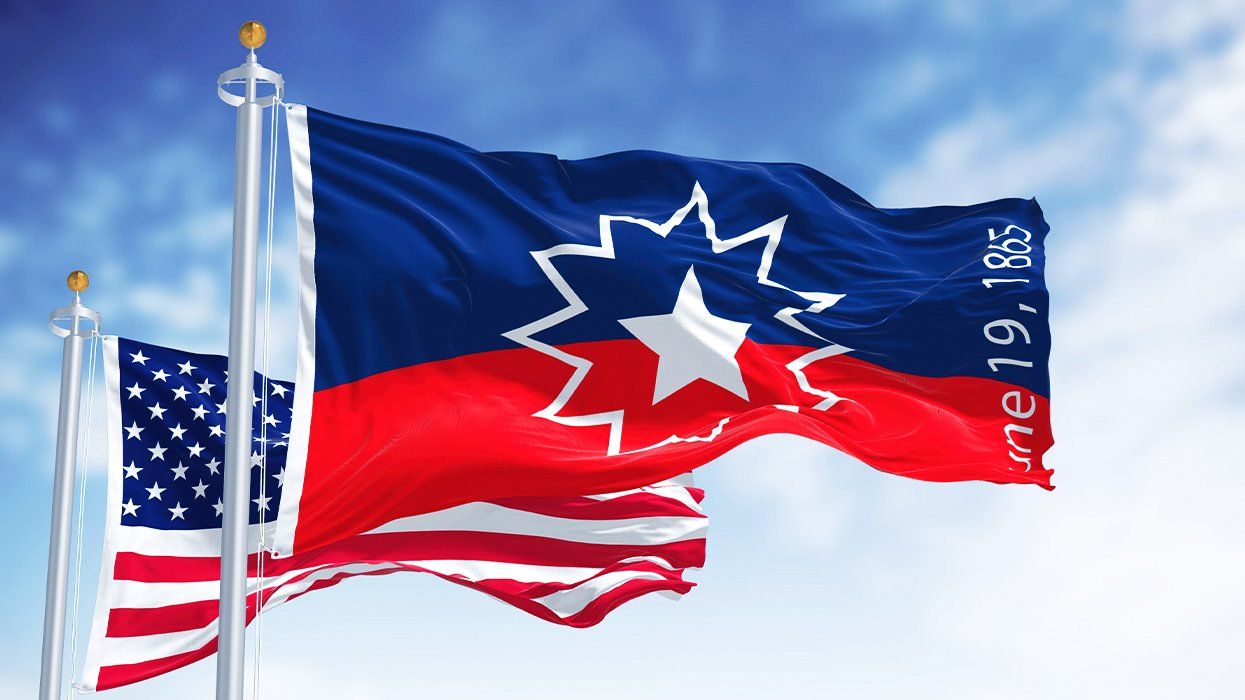Juneteenth, a federal holiday observed every June 19, commemorates the end of slavery in the U.S. Here’s a look at how it came to be.
Why June 19?
That was the date in 1865 when Union Maj. Gen. Gordon Granger arrived in Galveston, Texas, to announce that slavery had been abolished. Texas was the last state where it was being practiced, and communications being what they were at the time, word had not reached there until then.
President Abraham Lincoln had issued the Emancipation Proclamation September 22, 1862, and it took effect January 1, 1863, freeing slaves in all states that had seceded and joined the Confederacy — not that it was possible to enforce it universally, as the Civil War would continue nearly two and a half years longer. Gen. Robert E. Lee, the top Confederate commander, surrendered in April 1865, but Confederate forces in the west kept on fighting, finally surrendering on June 2. By then, many Southerners had brought the people they held in slavery to Texas, considered out of the reach of the Union Army.
Granger “had no idea that, in establishing the Union Army’s authority over the people of Texas, he was also establishing the basis for a holiday, ‘Juneteenth’ (‘June’ plus ‘nineteenth’), today the most popular annual celebration of emancipation from slavery in the United States,” historian Henry Louis Gates Jr. wrote in an essay published a few years ago on The Root and PBS.org.
How was Juneteenth initially celebrated?
Life remained brutal for formerly enslaved Black people in Texas and elsewhere long after the end of the Civil War. In Texas, some slaveholders didn’t deliver the news to the people they held in bondage or simply failed to treat them as free, even though Granger’s proclamation said former slaves should be considered “hired labor” and paid wages. African Americans who left their former masters were often hunted down and killed. The post-Civil War era known as Reconstruction allowed African Americans to exercise some political and economic rights, including voting and running for office. But the end of Reconstruction in 1877, with the withdrawal of federal troops from the South, meant there was no longer enforcement of any laws conferring those rights. Black people were disenfranchised, and many had to work as sharecroppers on the plantations where they had been enslaved. Racism was enshrined in laws, and lynching — the murder of Black Americans for any perceived transgression — became common.
But Black Americans persevered. In 1866, those in Texas celebrated the first anniversary of Juneteenth. The observances became a fixture in Texas over the succeeding years, with celebrants dressing in their finest clothes and gathering for a feast along with games, religious services, speeches, and political organizing. When white officials banned access to certain public parks, Black residents established their own spaces.
African Americans in other parts of the U.S. sometimes celebrated emancipation on other milestone dates — September 22 or January 1 for the Emancipation Proclamation, January 31 for Congress’s passage of the Thirteenth Amendment in 1865, abolishing slavery throughout the nation (a few states that allowed slavery had not seceded and were therefore not affected by the Emancipation Proclamation), or a few other dates. But as Black Texans migrated to other states, they brought the Juneteenth tradition with them — plus the date was one that usually promised good weather for outdoor events.
Juneteenth observances waned somewhat by the mid-20th century, as a romanticized, hugely inaccurate view of the antebellum South had spread through the nation, and racist laws and attitudes endured. But interest in the date was renewed in the 1960s with the civil rights movement. Rev. Martin Luther King Jr. had been planning a Poor People’s March, highlighting class inequality, at the time of his assassination in April 1968. His colleagues went ahead with the plan, but the march was not as large as they had hoped, so they ended it ahead of schedule — on June 19, 1968. That brought new attention to the date’s significance, and since then Juneteenth has been celebrated widely.
How did Juneteenth become a federal holiday?
It was a state holiday first. Texas passed a bill in 1979 making it a state holiday; the bill’s champion was Rep. Al Edwards, who became known as “Mr. Juneteenth.” More than 40 other states and the District of Columbia went on to give Juneteenth some form of recognition, but few had made it a paid holiday.
Then in 2021, President Joe Biden signed a bill into law establishing June 19 as Juneteenth National Independence Day. The bill’s leading sponsors included Democratic Rep. Sheila Jackson Lee of Texas, Republican Sen. John Cornyn of Texas, and Democratic Sen. Ed Markey of Massachusetts. Before Kamala Harris became Biden’s vice president, she had championed the action as a U.S. senator. Support for making Juneteenth a federal holiday had gained momentum after the widespread outrage over the murder of Black man George Floyd by Minneapolis police in 2020. It was the first new federal holiday since Martin Luther King Jr. Day was established in 1983.
Biden said signing the bill was “one of the greatest honors I will have as president.” He noted that Opal Lee, an activist who had pushed tirelessly for the move, was present at the ceremony, and he pointed out that establishing the holiday was merely a step toward equality. “We can’t rest until the promise of equality if fulfilled for every one of us in every corner of this nation. That to me is the meaning of Juneteenth,” Biden said.

























































